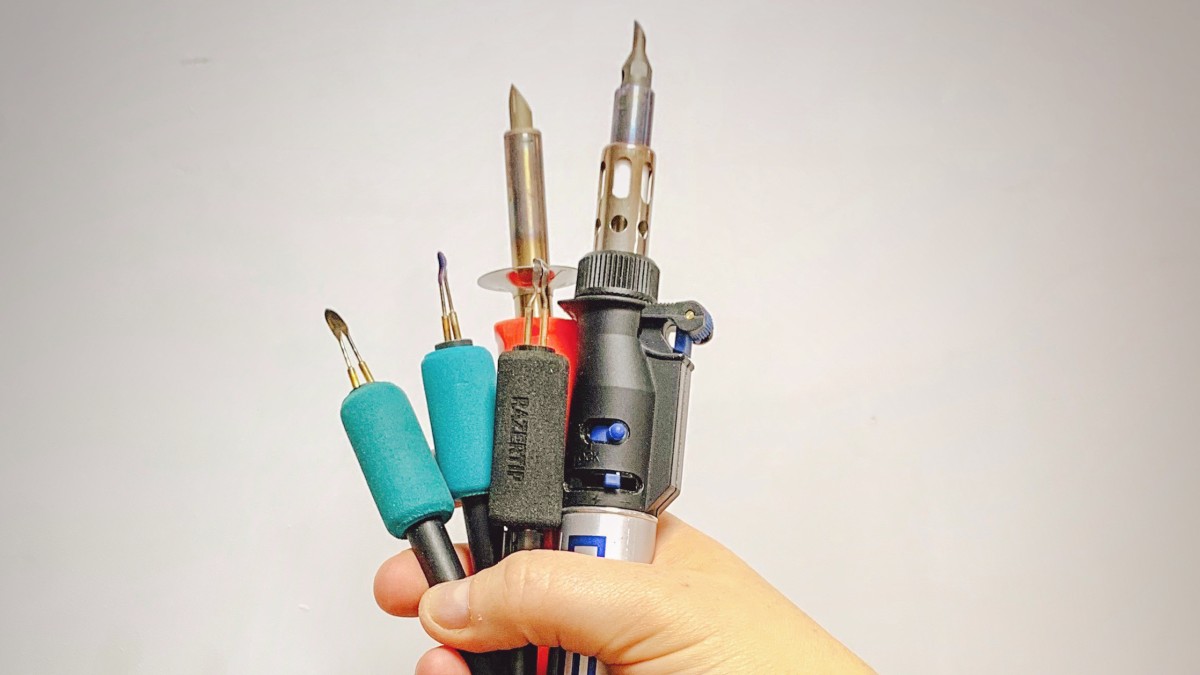Getting Started with Pyrography Nibs: What They Are & How to Use Them Without Feeling Overwhelmed

New to pyrography and feeling totally lost in the world of nibs? Here’s your beginner-friendly guide to understanding them — minus the stress.
🔥Getting Started with Pyrography Nibs: What They Are & How to Use Them Without Feeling Overwhelmed
New to pyrography and feeling totally lost in the world of nibs? Here’s your beginner-friendly guide to understanding them — minus the stress.
Wait... What Is a Pyrography Nib, Anyway?
Let’s clear up the mystery: a nib is simply the tip of your pyrography pen — the part that gets hot and makes contact with your wood. Think of it like a brush or pencil tip, only fiery.
There are lots of shapes and styles out there, and yes, it can feel overwhelming at first. But you don’t need to master them all to start. In fact, most beginners do just fine with one or two basics.
The Two Main Types of Pyrography Nibs
1. Solid-Point Nibs
These are the fixed metal tips that come with solid-tip burners (they often look a bit like soldering irons). They take a while to heat up, but they’re great for beginners doing line work or lettering.
Best for: Simple projects, names, line designs, and budget-friendly setups.
2. Wire-Nibs (Interchangeable)
These are used with variable temperature pens and are shaped from fine wire. They heat up fast, cool quickly, and come in all sorts of shapes.
Best for: More detailed work, smoother shading, and artistic control as you grow.

Common Nib Shapes You’ll Actually Use
Let’s skip the full catalogue and talk about the ones you'll meet (and love) first:
-
Writing/Universal Tip: Feels like a pencil. Great for outlining and lettering.
-
Ball Tip: Smooth and round — perfect for stippling or consistent dots and curves.
-
Skew Tip: Angled and sharp — makes crisp lines and is fab for fine details.
-
Shader Tip: Wider and flatter — gives you soft gradients and gentle shadows.
✨ Think of it like building a tiny toolbelt. You don’t need the whole hardware store — just a few trusty favourites to start.
How Do I Know Which Nib to Use?
Great question — and honestly? You learn by doing. But here’s a quick cheat sheet:
| If You Want To... | Try This Nib |
|---|---|
| Write or outline letters | Writing/Universal |
| Shade smoothly | Flat Shader, or spear shader |
| Create texture or dots | Ball Tip |
| Do fine, detailed linework | Skew Tip |
Still not sure? That’s where practice and play come in. Grab some scrap wood and try them out — no pressure, just exploration.
Want a Free Nib Guide Cheat Sheet?
I’ve put together a free, printable Beginner’s Guide to Pyrography Nibs that breaks this all down even further — with nib shape visuals, what they’re for, and room to make your own notes as you test them.
👉 Click here to download the free PDF and start building your confidence one burn at a time.
💬 Final Thoughts: You Don’t Need to Know It All to Begin
It’s easy to fall into the “I need to learn everything first” trap. But the best way to learn how pyrography nibs work… is to try them.
Play. Experiment. Burn some lines, shade a patch, scribble a flower. You’ll start to feel what each nib does.
And I’ll be cheering you on the whole way. ✨
Categories: : beginners pyrography, woodburning tools
 Kez Halliday
Kez Halliday 